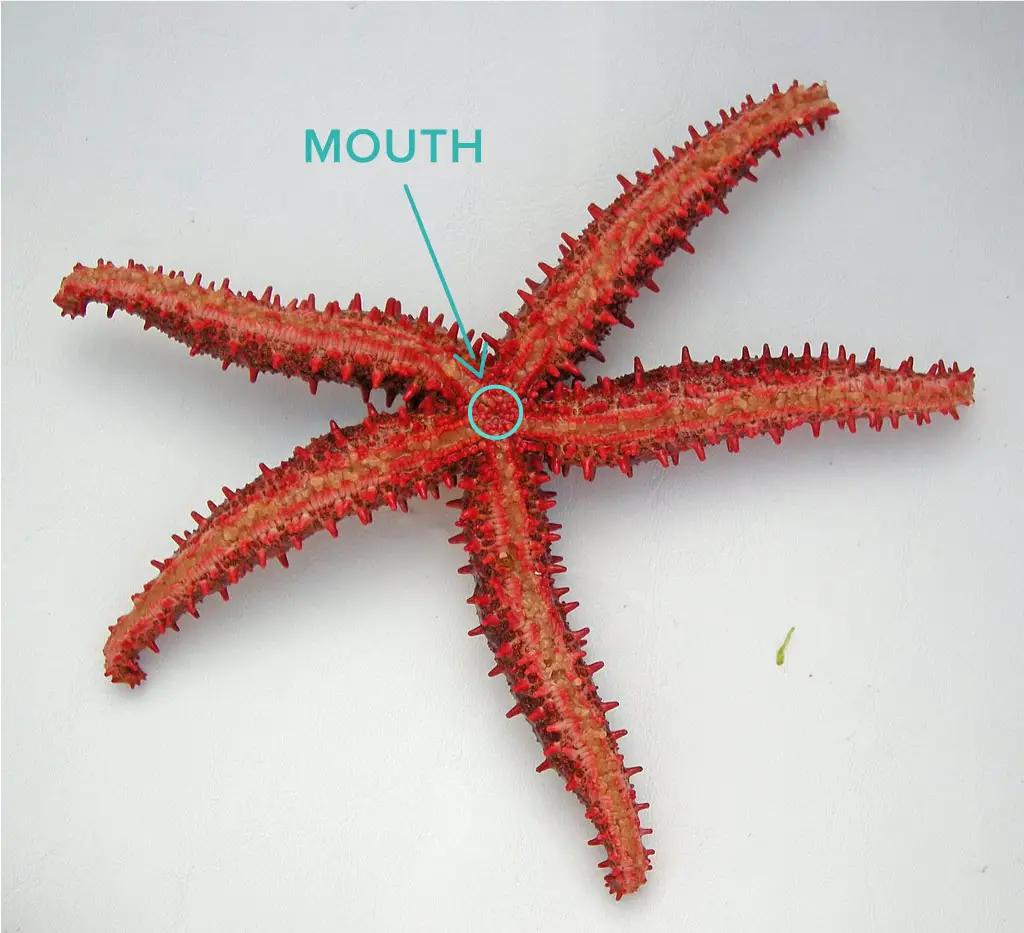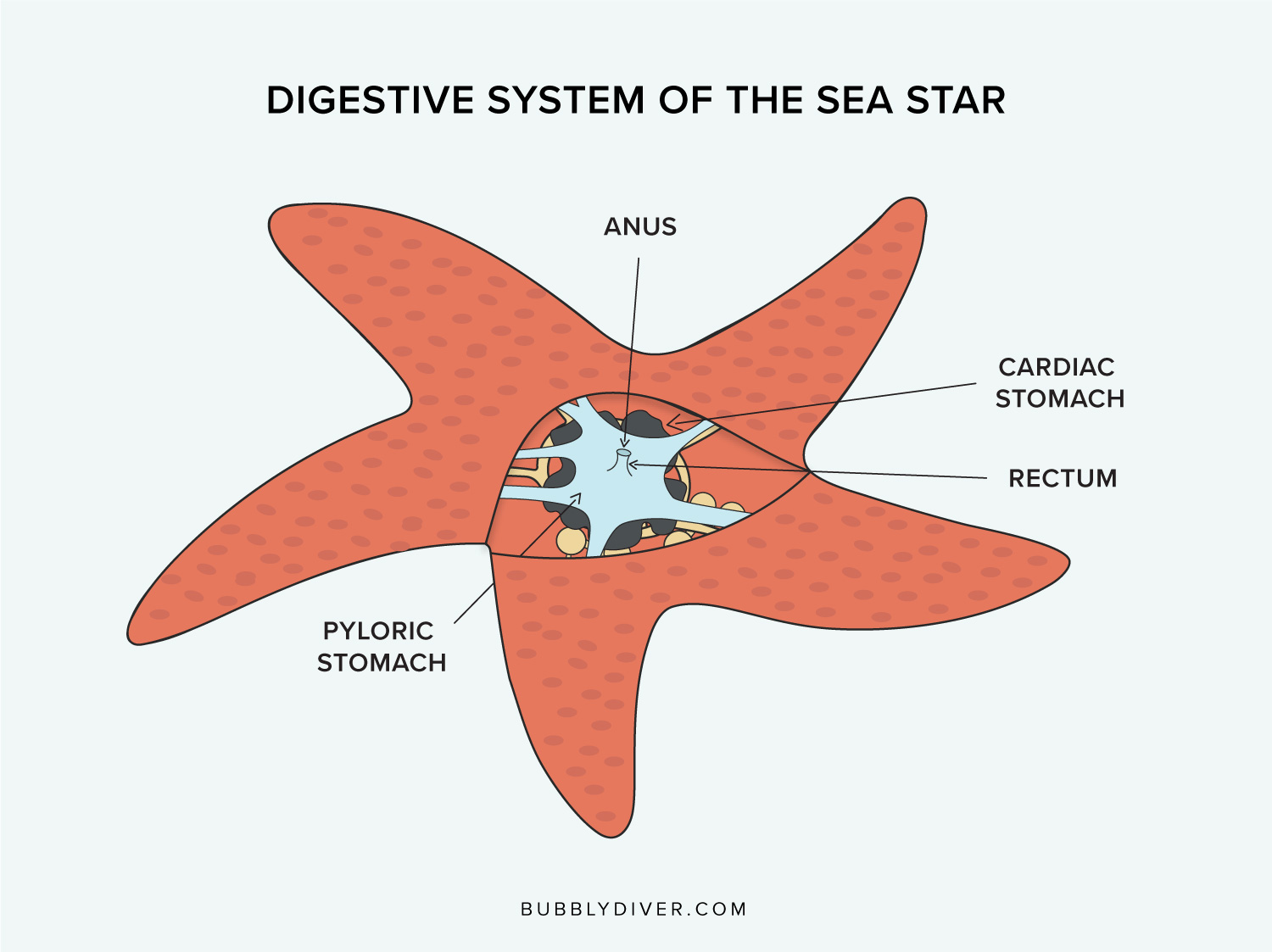Do Starfish Have Mouths And Teeth? (Explained)
Starfish (or sea stars) are generally simple animals without many obvious organs we would expect them to have in order to survive. They don’t have blood, hearts, or actual brains, but they’re still perfectly fine in their natural environment. Their bodies adapted to the conditions and developed different strategies to survive.
So, if you wonder if starfish have mouths or teeth, in this article we’ll talk all about that. However, let’s begin with a quick answer:
Starfish have mouths located at the center of the underside of their bodies. However, they don’t have teeth. Instead of biting or chewing their food, they pull the stomach out of their bodies, through the mouth, and directly digest the prey.
However, that certainly doesn’t tell the whole story. Below I’ll explain more about the starfish’s mouth and digestive system. Furthermore, I’ll explain what starfish eat and if they can bite you or hurt you even though they don’t have mouths or teeth.
Starfish digestive system
Starfish have a complete digestive system with a mouth located at the center of their oral side (underside) and an anus on their aboral side (upper surface).

The sea stars’ mouths are supported by a tough connective tissue membrane (peristorium). Protective moveable spines surround it, and what’s interesting – starfish don’t have teeth. They don’t bite their prey, so they simply don’t need teeth.
Next, the mouth connects with a short oesophagus, leading to the stomach. Seastars have two separate stomachs that play different roles in the digestive system: the outer muscular, cardiac stomach, and inner pyloric stomach.

The larger cardiac stomach can be pushed out of the seastar’s body through the mouth. It’s supported by ligaments attached to ossicles in the arms so it can be pulled back inside. When the seastar decides to eat, it pulls the stomach out, waps it around the prey, and secretes digestive enzymes to break down the prey. Next, it pulls it back through the mouth, and food goes to the second, smaller pyloric stomach, where digestion is complete.
The pyloric stomach has two extensions into each arm, called pyloric caeca. These branched hollow tubes produce digestive enzymes and absorb nutrients from the food.
Next, the intestine and rectum run from the stomach and open out through the anus located on the starfish’s aboral surface. Some seastars lack an anus (for example, Ctenodiscus), and solid waste materials are ejected through the mouth.
Starfish that do have teeth
Since sea stars feed using their stomach, there’s no need for them to have teeth. However, there are some species that do have teeth or at least teeth-like structures, called pedicellariae. Pedicellariae are small pincer-like jaws found in some sea stars and they’re used for protection and defense.
However, Stylasterias forreri sea star actually uses this system to catch small fish to eat! This sea star is covered in spines and the cushions of pedicellariae are elevated along the spines, exposing the jaws and teeth of the pedicellariae. Each arm of the starfish has around 210-245 cushions and each cushion contains around 40 pedicellariae. This means that there are about 49000 pedicellariae ready to capture the prey.
Once the sea star captures the prey, it’ll transform it into the mouth using its spines and will eat it in the way I already described – by pulling the stomach out and digesting the food.
The other “starfish” that has teeth is a brittle star. Brittle stars are not sea stars (class Asteroidea) because they belong to the other class called Ophiuroidea, but they’re closely related. Brittle stars have their mouth also located on the underside of the central disc. The mouth is surrounded by five jaws with “teeth” called oral papillae.


They mostly use them to grip or spear captured prey before ingestion.
What do starfish eat?
What’s interesting about the way how starfish eat is that starfish can prey on animals much larger than their mouths simply because of their ability to digest food outside of their bodies. These marine creatures mostly eat mollusks such as oysters, clams, and mussels. They can open up the shells of their prey by using their sticky tube feet. I wrote more about how they use their feet and water vascular system in this blog post.
Sea stars also prey on arthropods and small fish but mostly when they’re injured and can escape. Some starfish feed on algae or organic detritus, and some, like crown-of-thorns starfish, feed on corals and sponges. You can read more about it in my other article, “What Do Crown Of Thorns Starfish Eat?”.
Can starfish bite you?
Starfish can’t bite you because they don’t have teeth, but some starfish can sting you instead. There are a few species, such as crown-of-thorns starfish, that are covered in venomous spines. If you touch them and receive the venom, it can cause you a severe sting, pain, and swelling that can last for hours or days.
Most starfish are harmless to humans but keep in mind that you should never pick them up from water because it makes them suffer and can cause death. Sea stars can live out of the water for no longer than 30 seconds or a few minutes. We can also transport diseases to them, and the skin oil or the sunscreen that we often use is incredibly harmful.
You may also like:

Welcome to Bubbly Diver!
I’m glad to see you here. This blog is created for all marine creature lovers by a bubbly diver - me, Dori :)


